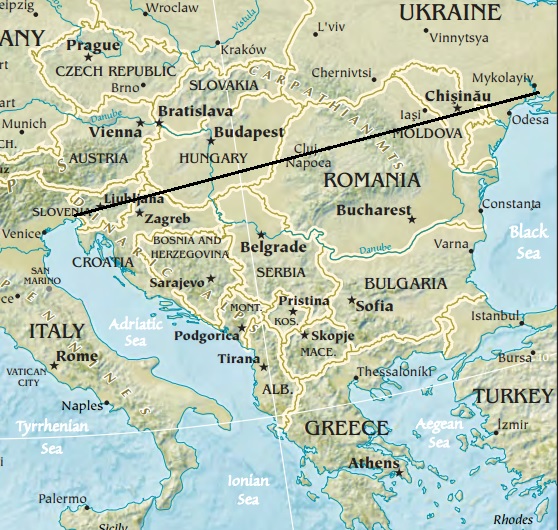The L283 sample(s) found in Sardinia were from the Nuragic era which saw the arrival of the Bonannaro culture in Sardinia. The Bonannaro culture was from northern Italy/Central Europe. So the L283 in Sardinia likely came from continental Europe.
Nurahgic era is from 1800 BCE to 238 BCE
The first people in the adriatic sea were the carians who western asians.
8th century BC which is between 1800 and 238BC the phonecians and I qoute:
From the 8th century BC, Phoenicians founded several cities and strongholds on strategic points in the south and west of Sardinia, often peninsulas or islands near estuaries, easy to defend and natural harbours, such as Tharros, Bithia, Sulci, Noraand Caralis
(Cagliari). The majority of the inhabitants in these cities were of indigenous nuragic stock while the Phoenician element was, although culturally predominant, in minority.[11][12] The Phoenicians came originally from what is now Lebanon and founded a vast trading network in the Mediterranean.
So you see, carthagenian /hypothesis still plausible. As J-Z600 -585 is not mainland european. And as there is a istanbul J-Z600 -Z585
Also Z585 split is 3400 bc. Over 1000 years apart from1800 BC from begining of nuraghic culture. So it makes no sense.
As Z600 -z585 is not really a mainland european haplo the only ancient sources are caucasians and georgians. And modern old worlders is sardinian and Istanbul.
Georgians are colchians. Herodotus states that colchians were decended from ancient egyptians.
But that does not necessarily mean j-z600 spread from egyptians. But a phonecian who had decended from colchians probably, or people of sardus if you believe nuraghic? Are actually hellens and berbers
Sardonian? Sardinia? Sardus? Sidonia? Sidon?
According to Sallust,[1] Sardus son of Hercules, left Libya along with a great multitude of men and occupied the island of Sardinia, which was so named after him. Later Pausanias confirms the story of Sallust and in the second century CE writes that Sardus was the son of Makeris (identifiable with Mecur / Macer, a Libyan name deriving from the Berber imɣur "to grow"), and that the island of Sardinia changed its name from Ichnusa to Sardinia in honor of Sardus.[2][3]
In AD 1855, the sarcophagus of King Eshmun’azar II was discovered. From a Phoenician inscription on its lid, it appears that he was a "king of the Sidonians," probably in the 5th century BC, and that his mother was a priestess of ‘Ashtart, "the goddess of the Sidonians."[3] In this inscription the gods Eshmun and Ba‘al Sidon 'Lord of Sidon' (who may or may not be the same) are mentioned as chief gods of the Sidonians. ‘Ashtart is entitled ‘Ashtart-Shem-Ba‘al '‘Ashtart the name of the Lord', a title also found in an Ugaritictext.







